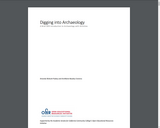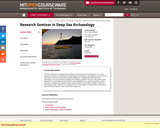
This book is intended for use in a variety of introductory archaeology settings, such as in lectures and lab courses. This text can complement an existing traditional text or completely replace a standard text. It can be used for its activities or as a study resource. When we wrote this text, we designed the chapters to be brief, providing concise and to-the-point information. This book is not intended to replace lectures or direct instruction from an instructor; rather, it supports learning in a variety of settings and formats. The book can be printed in whole, read digitally, or used piecemeal in either format. However you use this text, we hope that you find it serves as an instructive learning tool and that you dig archaeology as much as we do!
Table of Contents
1: Introduction to Anthropological Archaeology
2: History (up until the 1960s)
3: History (the 1960s and beyond)
4: The Archaeological Record and Site Formation Processes
5: Artifact Preservation
6: How to Find Archaeological Sites
7: Excavation
8: Dating Methods – Relative and Absolute Dating
9: Artifact Analysis
10: Reconstructing Environments and Subsistence Patterns
11: Social Archaeology
12: Bioarchaeology
13: Archaeological Interpretation and Application of Theory
14: Historical Archaeology
15: New Frontiers in Archaeology
16: Legal and Ethical Considerations in Archaeology
- Subject:
- Anthropology
- Archaeology
- Social Science
- Material Type:
- Textbook
- Author:
- AnnMarie Beasley Cisneros
- Amanda Wolcott Paskey
- Date Added:
- 07/09/2020
